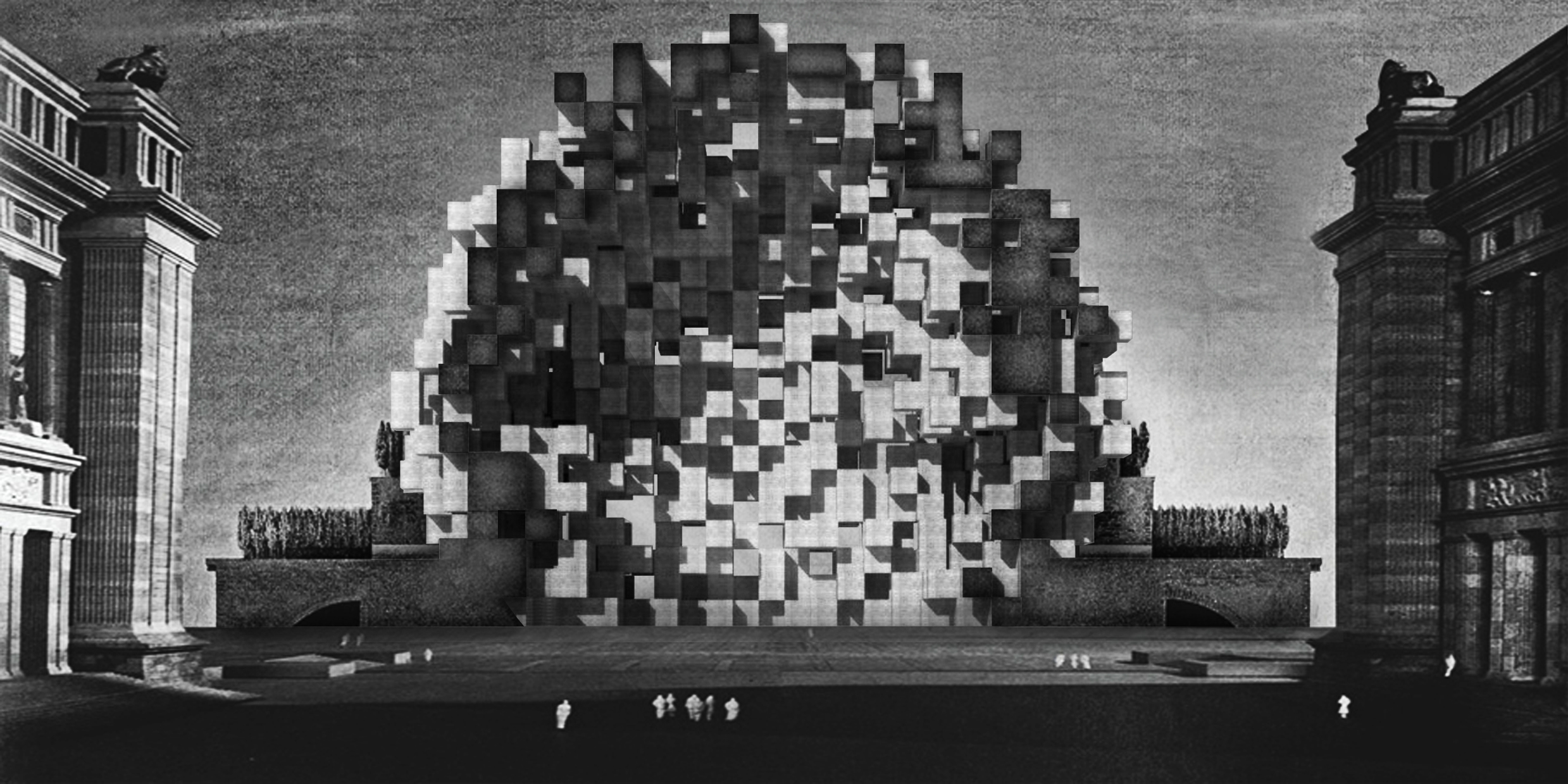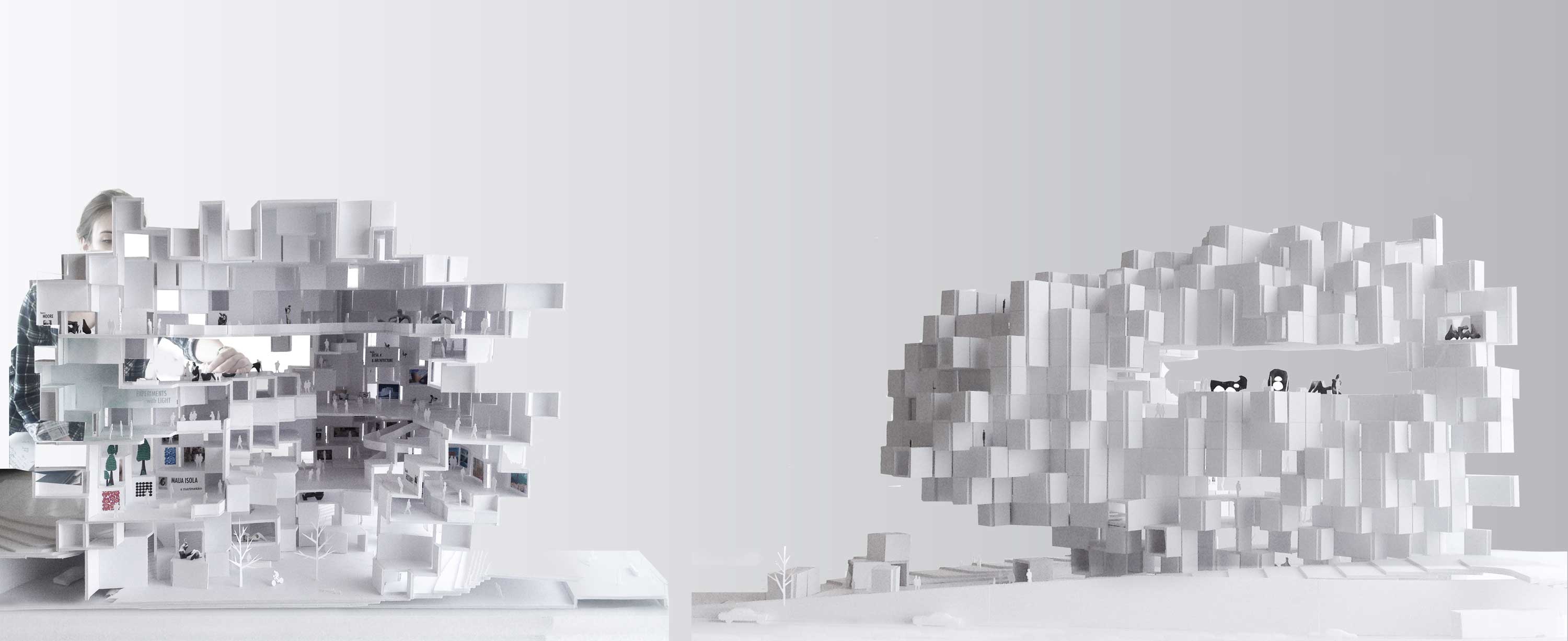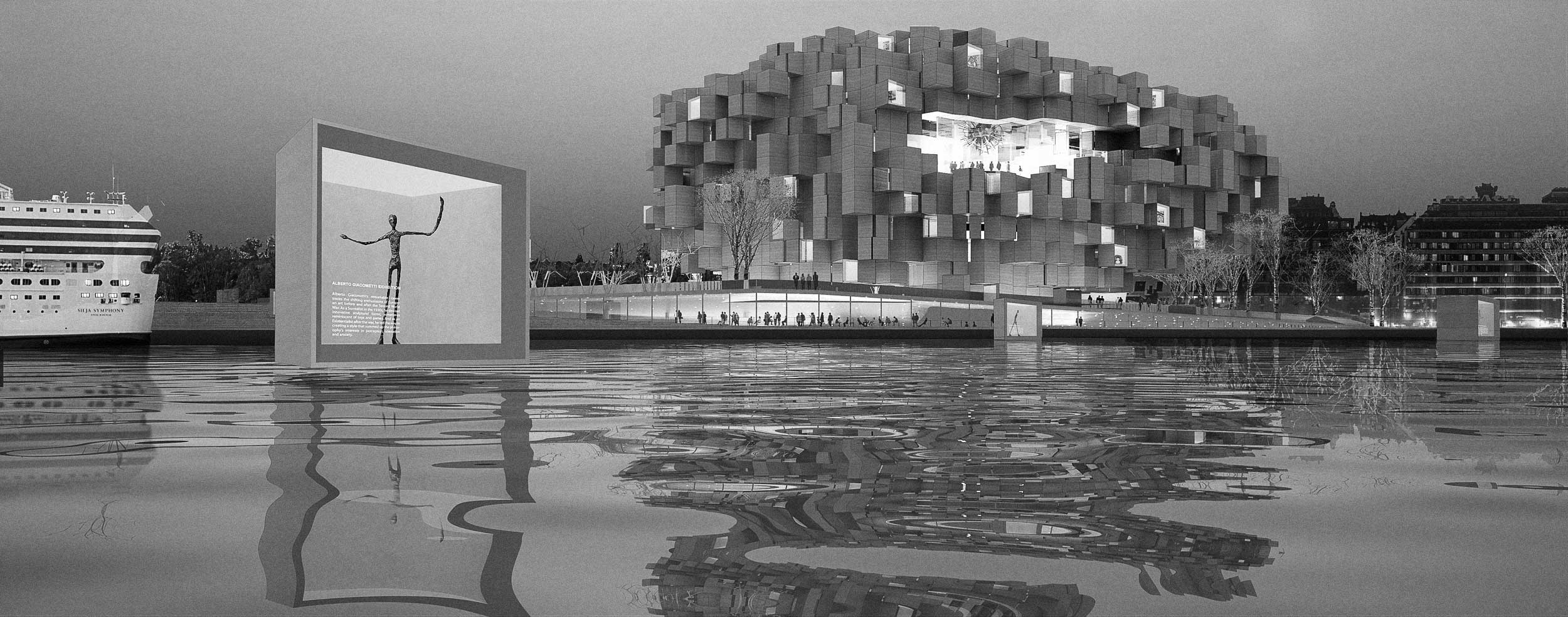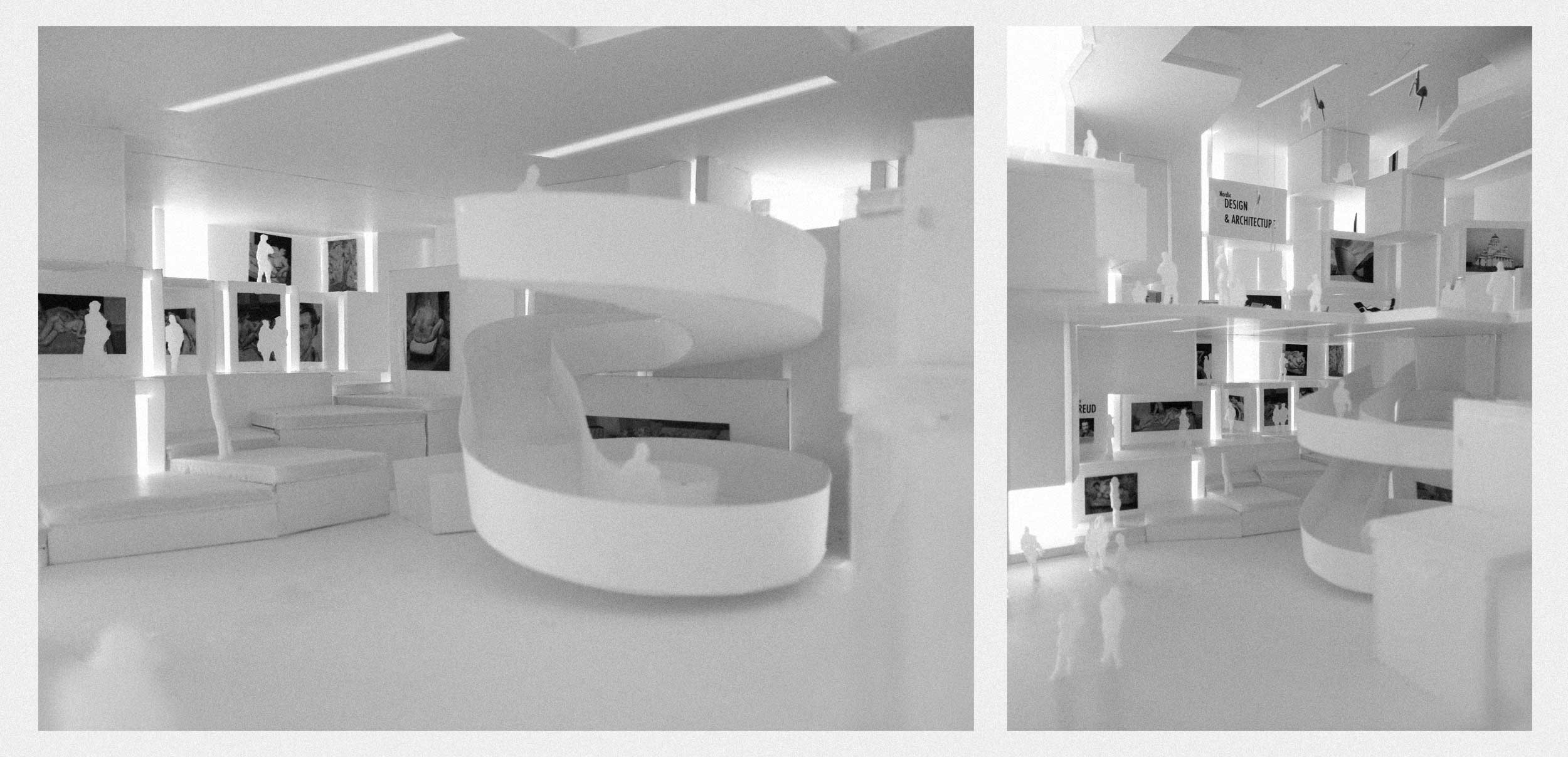




Project Description
The design challenge of the museum is to find a moment of tangency between two ideals: the Guggenheim ideal of creating architectural icons and the Nordic ideal of openness and accessibility. Guggenheim museums have had no precedents at the moment of their inception; each unique on its own and each a new addition to the repertoire of architecture. Helsinki is an egalitarian city within which institutions are accessible and humane. How can a building be both monumental and accessible at the same time? How can it be both contextual and yet with no precedent?
Our proposal tries to find the answer in timber by developing a porous wooden structure alongside the Helsinki harbour: a grand piece of nature that is harboured on the edge of the waterfront and is occupied with art, ecology and people.
A shift is proposed from the notion of the museum as a building within which art is displayed to a notion of a structure that is populated with art. The idea is to find a more immediate and direct relationship between the container and the contained. The structure will be created by an array of wooden pixels forming the exhibition spaces. Pixels are stacked, merged or separated to create a diversity of use and experience needed for the museum.
The Experience
Every exhibition will become an opportunity and challenge for the curator in finding a dialogue between the art and the space. Visitors will become explorers; art will become immediate as it disperses across the body of the ‘Driftwood’ and the site. The scale of the structure will be simultaneously grand and small. The consolidated pixels will form larger spaces and the dispersed ones across the landscape will become territorial indexes for the museum to create a gradual transition from everyday life of the city to the elevating experience of the museum. The division between exterior and interior will be blurred; the continuity of indoor experience will be modulated with moments of views to the art pieces on the roofscape or to the Helsinki skyline.
The Hollows
Four major openings are carved from the body of the structure to allow for the entry of people, light and views to and from the museum; two at the ground level to create diagonal entries to the building and the other two at mid level to become urban openings to connect the museum to the city landmarks and the harbour. The two top hollows will also expose and add moments of major exhibitions to the skyline of the Helsinki.
The Terrain
The terrain of the project is designed as a bent plane in order to create two diagonal, barrier-free entries to the building from Laivasillankatu and the public piazza proposed at the north east-end of the site (Etelaranta). The other two corners of the museum site (north west and south east) have been lifted up to allow a covered parking entrance and service access on the north west and a vibrant frontage for the waterfront future promenade on the south-east corner. This active frontage of the museum will accommodate the restaurant and the store that will have longer working hours than the museum and can also create vibrancy around the water and the museum at night.
Timber and Sustainability
The structure will be the largest precedent for CLT (Cross Laminated Timber) panels in the world, an evolving technology currently being used to maximize the potentials of wood in construction. The three dimensional wooden waffle-structure will create rigidity across the three axes and the modularity of the panels can guarantee the efficiency of the construction method. The poche of the structure will become habitable and spatial; every wood pixel will be both a unit of structure as well as a unit of space and through that the thickness of the building becomes the thickness of the structure thus the long span over the openings will be done by the thickness of the spaces covering them.
Wood is the only renewable construction material than can be used both as the structure and as the interior finishes and the furniture; a local material with a long history in Finnish architecture. By maximizing the use of wood, the project will be inherently sustainable, local and biophilic. The gentle slope of the roof pixels will shed the rain water off the building to the sloped ground and eventually harvested at the bio-swale designed at the intersection of the wooden structure and the ground. A range of roof pixels that are viewed from the interior spaces will be planted and green.
The structure will be grand and yet the warmth of wood will make it humane and accessible, a sublime presence without being overpowering to the city or the viewers.
